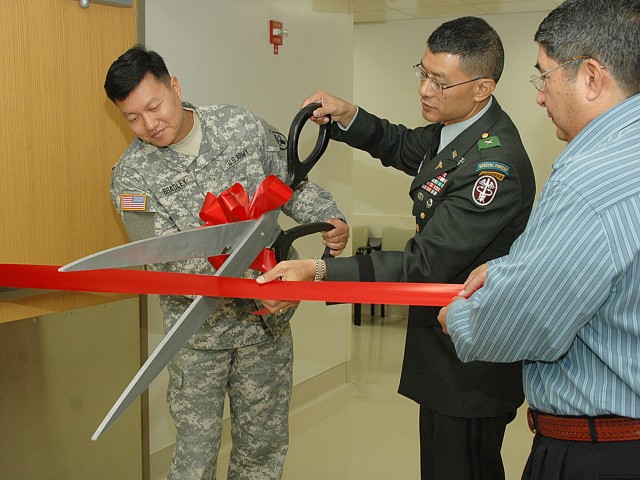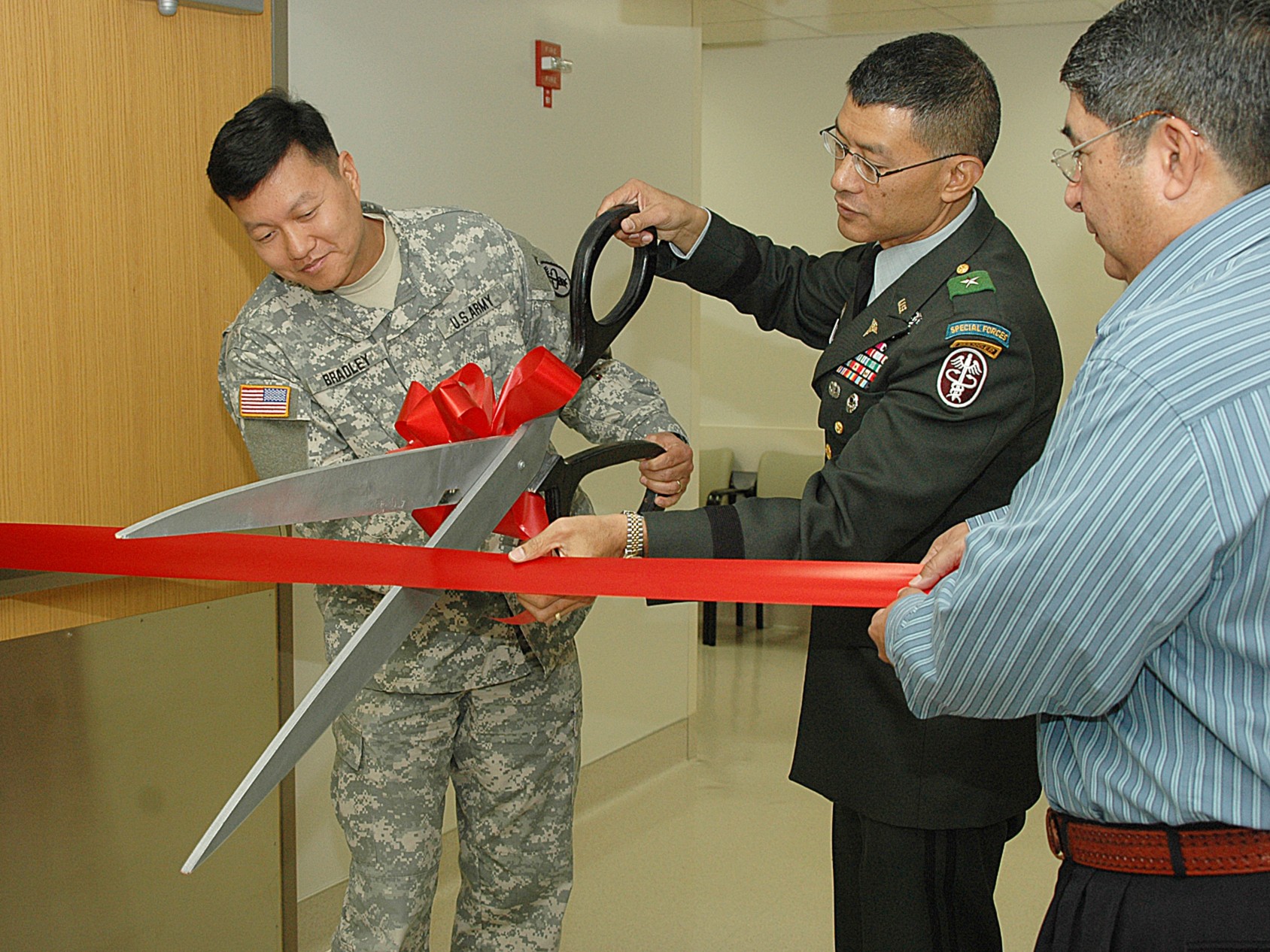FORT SAM HOUSTON, Texas -- The new magnetic resonance imaging suite on the first floor of Brooke Army Medical Center is the first project completed there as part of Base Realignment and Closure recommendations.
The expansion was needed to handle the increased volume of inpatients expected at BAMC as a result of the recommendation to transfer all inpatient services from Wilford Hall Medical Center at Lackland Air Force Base.
The WHMC MRI unit currently sees approximately 40 patients a day during the week and an additional 24 on Saturdays.
MRI equipment is used to look inside the body without using X-rays. Under controlled circumstances, an extremely powerful magnetic field and radio frequency energy are used to create computer-assisted images of the body. These images are then interpreted by specialists trained in neuroradiology, body imaging and orthopedic radiology.
The new MRI suite is located near the bed tower entrance of the BAMC's west wing. Its 8,796-square-foot, single-floor space will house 17 staff members, including military and civilians. The MRI addition is more than double the size of the original MRI wing that was razed so the new consolidated tower can be built.
"It is a great pleasure for me to be here for the very first [San Antonio Military Medical Center] BRAC ribbon cutting ceremony of the many we will have in the future," said Brig. Gen. Joseph Caravalho Jr., commander of Brooke Army Medical Center and Southern Regional Medical Command (Provisional).
"The new MRI suite was designed by an integrated team of Army and Air Force clinicians."
In addition to the increased space, two state-of-the-art Siemens 1.5 Tesla MRI units and one Siemens 3.0 Tesla MRI have been added, a first for BAMC.
The new units will allow patients to feel more comfortable and less claustrophobic during examinations. The 1.5 Tesla features twice the scanning power and higher quality images than the old units. The increased magnet length also means that 60 percent of examinations can be performed with a patient's head outside the magnet and noise is reduced by 97 percent.
According to the Siemens literature, these units have a larger diameter opening, allowing for more headroom, leg room and elbow room. Patients won't feel like they're nose-to-nose with the magnet, allowing claustrophobic or anxious patients to be more relaxed throughout their examination.
And if a picture is worth a thousand words, the 3.0 Tesla MRI is an encyclopedia. The magnetic field yields exceptional anatomic detail, especially beneficial for pathological conditions involving the brain, spine, and musculoskeletal system. This added magnetic field strength results in reduced scan times and improved image resolution with finer detail.
There is also a new four-bay inpatient bed waiting area, where patients can wait in privacy.
"Radiology is a critical care in the hospital and in health care in general," Caravalho said.
"We're very excited about the state-of-the-art work led by outstanding individuals in an infrastructure that is put together in a great fashion."
(Steve Elliott contributed to this article.)


Social Sharing